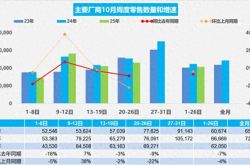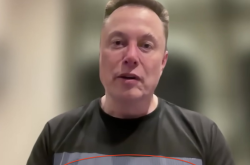Challenges and Hurdles in Household Appliance Consumption Amid National Subsidy Policy
![]() 02/14 2025
02/14 2025
![]() 552
552

The full implementation of the "national subsidy" policy for household appliances in 2025 presents both an opportunity and a challenge for manufacturers. The question is how to transform this rare subsidy policy into a catalyst for enhancing consumer vitality, motivation, and upgrading, rather than falling into the trap of "marketing homogeneity".
By Chang Wei
Entering February 2025, many household appliance manufacturers encountered yet another round of "delightful dilemmas" in frontline market competition.
After the Spring Festival promotions, many manufacturers realized that obtaining "national subsidy" qualification was no easy feat, and the policy alone was not a silver bullet. Even with the subsidy, they did not automatically enjoy the benefits of "effortless sales and substantial profits." Instead, they still had to rely on their marketing teams' hard work and sprint to compete for market share.
Particularly, the cultivation and competition for user demand in the frontline market faced new challenges and hurdles. Firstly, the trend of mainstream consumption downgrading was difficult to mitigate, posing a significant difficulty. Manufacturers had to seek solutions within the context of this downgrade. Secondly, the desire for mainstream consumption was heavily influenced by the external economic environment, creating a bottleneck. Manufacturers had to find ways to reverse and alleviate this impact.
In essence, the "national subsidy" policy for household appliances is an external policy force for manufacturers, not an endogenous strength. Its core aim is to help appliance enterprises and retailers activate more consumer demand through national financial subsidies, thereby promoting the sales share of high-end, quality products, and new offerings, and adjusting business structure and quality. In other words, while many appliance enterprises can expand their market with the help of the subsidy policy, the key in the frontline market lies in establishing and executing their own business strategies and methods to "reach users".
From the perspective of the home appliance industry, the value of the "national subsidy" policy for related manufacturers is twofold: Firstly, it emboldens manufacturers with strength, vision, and capabilities, giving them more time, resources, and energy to manage users, seek structural upgrades of market products, and improve business quality. Secondly, given that the current home appliance market has entered a stock cycle, the replacement of old appliances with new ones has become mainstream, stimulating the demand for appliance replacement in more households. The focus is on "replacement, upgrading, and refinement," helping more manufacturers discover new market dynamics and growth directions.
Therefore, for all household appliance manufacturers, in the current economic and consumption environment, obtaining "national subsidy" qualification for appliance products or retail stores does not automatically translate into new momentum or engines for "selling more goods, selling good goods, and making big money." It merely signifies that relevant manufacturers have gained the subsidy incentive to participate in frontline market competition. The ultimate market performance and product shipments still hinge on the manufacturers' own capabilities, means, and methods.
Faced with the same "national subsidy" policy for household appliances, the next test for manufacturers is their ability to lead consumer demand with differentiated products and strategies in the process of stimulating consumption. In other words, the subsidy policy is merely a threshold or a "policy wall." It is not a "panacea" or "miracle cure." It merely weeds out weaker appliance manufacturers from mainstream market competition. However, large and medium-sized manufacturers generally have "survival, development, and competition" needs. They must find a breakthrough in the mainstream market and consumer groups.
This year, household appliance manufacturers face two primary tasks: Firstly, leveraging the power of the "national subsidy" policy to create more novel consumption waves, trends, and highlights. They cannot rely solely on subsidy power but must manage users to create more benefits and values beyond subsidies. Secondly, taking the lead in replacing, upgrading, and refining appliances as a breakthrough point to further strengthen and guide users' replacement lifestyle, replacement life attitude, and propositions, making the leap from selling products to embracing users' lives.
Behind these two tasks lies a common business objective: household appliance manufacturers must construct more consumption hotspots, highlights, and differences beyond the "national subsidy" policy to overcome market difficulties and bottlenecks. Besides competing with cost-effective products guided by price, they must also actively explore around the interests, lifestyles, and pain points of users in different circles.
Firstly, from a product perspective, focus on the 1st and 2nd-level energy-efficient household appliances targeted by the "national subsidy" policy, aligning with market and consumer demand. Apart from developing single products, more effort should be directed towards planning and promoting suites, systems, and multi-scenario solutions. Emphasize scenes such as kitchens, balconies, bathrooms, and living rooms, providing users with "tangible, sensible, and heartfelt" reasons and value for their replacement lifestyle.
Secondly, from a marketing perspective, focus on the market operation and competition originating from "trade-ins," addressing the pain points of old users who are afraid of trouble and reluctant to replace, as well as the life philosophy of "not replacing old products unless they are broken." Through strategies like "close to users" for dismantling old products, delivering new products, and integrated delivery and installation, users will no longer be confused and troubled, easily and happily embracing a new life.
Declaration: Original article by the home appliance industry, strictly prohibited from reprinting without authorization








